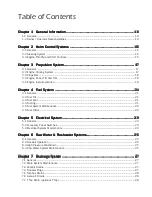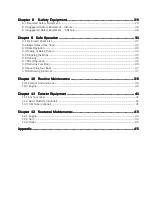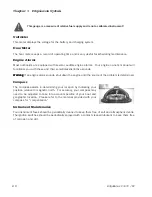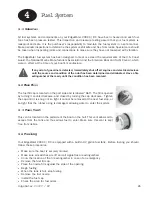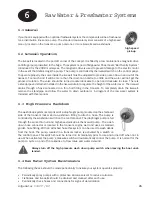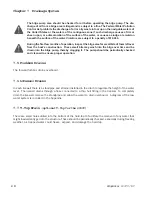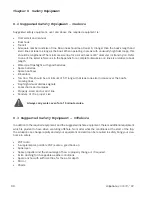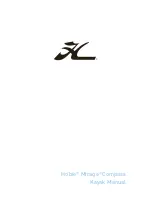
2
Helm Control Systems
EdgeWater 200CC / DC
15
2.1 General
The helm station is the control center for the boat. The main control systems are the engine throttle and
shift controls, the steering system, and the trim tab controls. These provide the operator the ability to
control speed, direction, boat trim, and attitude. Each manufacturer provides manuals on the operation
and use of their systems. On the EdgeWater 220CC the center console has been designed for
stand up operation. This is especially useful when operating with a sea running as your knees can flex to
help absorb the boat’s movement. The starboard helm station for the 200DC has been designed for
either standing or sitting operation.
2.2 Steering System
General
The manual, which comes with your steering system, will provide specific information on your steering
system.
There are two main components of your steering system: a helm assembly and hydraulic cylinder. Turning
the helm, which pumps fluid in the hydraulic hoses, activates the hydraulic cylinder and causes the motor
to turn. The helm acts as both pump and reservoir.
While running at slow speeds, most boats tend to wander slightly back and forth. Keeping the wheel in the
center without overcompensating for the slight wandering will prevent over steering and reduce the tendency
to wander.
Steering System Maintenance
Routine system inspection should occur regularly. Cables, hoses, linkage and helm assemblies should be
inspected for wear, corrosion, cracking, or deterioration. Cleaning and light grease should be applied to all
exposed metal parts and other damaged or deteriorated parts should be replaced as soon as possible.
2.3 Engine Throttle and Shift Controls
Refer to the engine manual supplied with your engine for specific information on your controls. The ones
depicted are those supplied by Yamaha.
Your EdgeWater 200CC / DC comes only with a single engine. There are three major components of the
engine throttle and shift controls: handles, throttle cable, shift cable. Throttle and shift cables are push-
pull and are connected to the fuel system (carburetor or fuel injection) and the other to the shift rod
linkage. By moving the handles forward and back, the operator engages the cables thus controlling the
amount of fuel being used and the gear selector for forward neutral and reverse. Careful use of the
controls provides smooth, responsive and safe operation.





